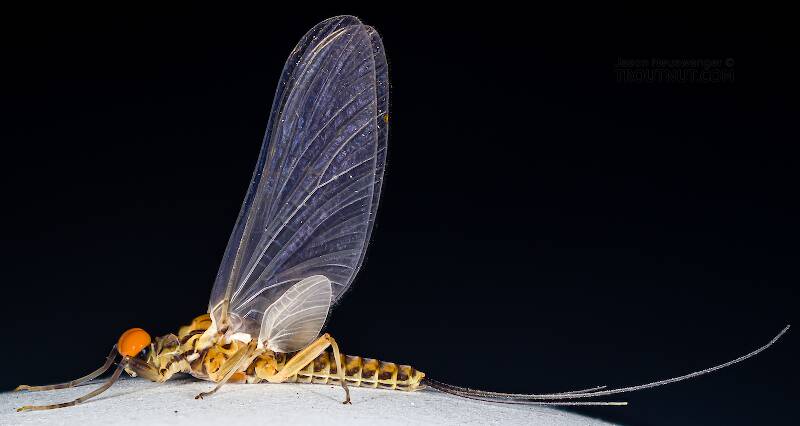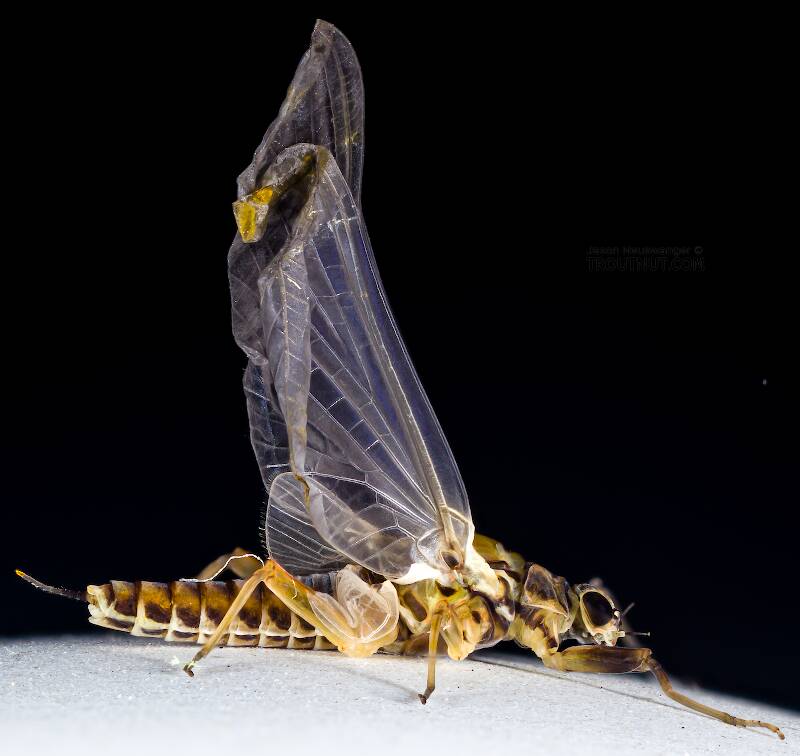
Hex Mayflies
Hexagenia limbata
The famous nocturnal Hex hatch of the Midwest (and a few other lucky locations) stirs to the surface mythically large brown trout that only touch streamers for the rest of the year.


Mayfly Species Caudatella heterocaudata
Where & when
Time of year : July and August
In 1 record from GBIF, this species has been collected at elevation of 1699 ft.
Species Range
Nymph biology
Current speed: Fast
Identification
To determine whether a specimen of Caudatella belongs to Caudatella heterocaudata, use the Key to Species of Caudatella Nymphs.
Physical description
Most physical descriptions on Troutnut are direct or slightly edited quotes from the original scientific sources describing or updating the species, although there may be errors in copying them to this website. Such descriptions aren't always definitive, because species often turn out to be more variable than the original describers observed. In some cases, only a single specimen was described! However, they are useful starting points.
Male Spinner
Wing length: 6.5–7.5 mm
Eyes reddish-brown. Thorax olivebrown, yellowish patch anterior to the base of the wing, containing a black line which descends to the coxa of the foreleg; lateral sutures marked with black; legs pale olive-brown; fore femora and tibia with black markings; wings hyaline with pale veins and cross veins. Abdominal terga olive-brown, anterior half of each of the first four segments with broad black bands, bands on posterior segments reduced to large semicircular dorsal patches; sterna pale olive-brown with ~midventral and sublateral longitudinal dark brown stripes as in fig. 7. Caudal filaments brown, lateral cerci 20%-30% as long as terminal filament. Penes with a shallow median apical depression as in fig. 3.
Female Spinner
Wing length: 6.5–7.5 mm
Similar to male except for usual sexual differences.
Nymph
Cerci 2-3 mm long; terminal filament 10-12 mm long. Head brown with pale markings, roughened but without occipital tubercles; antennae brown ; maxillary palpi three-segmented as in fig. 12. Thorax brown; legs brown, femora with a few marginal spines and a distinct row of marginal hairs, tibiae and tarsi with a distinct row of marginal hairs (fig. 15), tarsal claws with three to seven denticles. Abdominal terga olive-brown; anterior half of each of the first four segments with broad black bands, bands on posterior segments reduced to large semicircular dorsal patches; each tergum with a series of lateral black patches; paired dorsal abdominal tubercles on segments 1-9 or 2-9 as in figs. 1 and 23; sterna pale olive-brown with median and paired sublateral longitudinal dark brown stripes as in fig. 7. Caudal filaments light brown, darker at the joinings; lateral cerci 20% to 30% as long as terminal filament.
Specimens of the Mayfly Species Caudatella heterocaudata
1 Male Dun

1 Female Dun

It's always a bit difficult to identify a female dun, but in this case the three longitudinal stripes on the sternites are very distinctive and narrow the choices to Caudatella heterocaudata and Caudatella columbiella. However, the length of the fore wing measured with a caliper is 7.25 mm, whereas columbiella should be no more than 6 mm, so heterocaudata appears to be the correct ID.
Start a Discussion of Caudatella heterocaudata
References
- Arbona, Fred Jr. 1989. Mayflies, the Angler, and the Trout. Nick Lyons Books.
Mayfly Species Caudatella heterocaudata
Species Range
Resources
- NatureServe
- Integrated Taxonomic Information System
- Global Biodiversity Information Facility
- Described by McDunnough (1929)

